#monitorlizard
Explore tagged Tumblr posts
Text
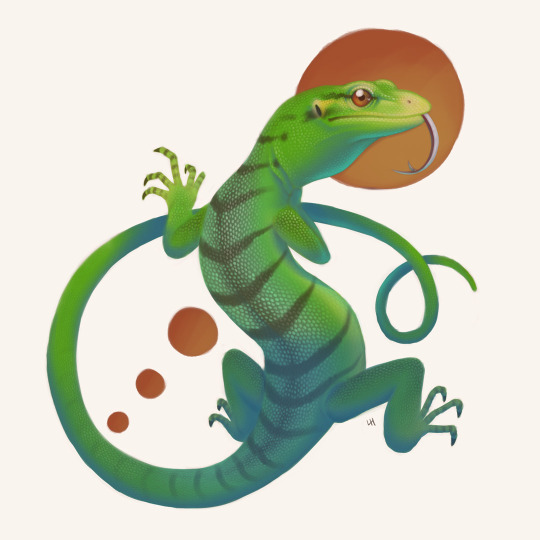
Time for the emerald tree monitor 🦎 This had been on my list to draw for a long time, I hope I did it justice!
エメラルドツリーモニターの時間です🦎 これはずっと描きたかった!
#art#アート#illustration#photoshop#reptile#爬虫類#lizard#トカゲ#emerald#monitorlizard#reptilesofinstagram#herpetology#science#red#赤い#green#緑#cartoon#cool
55 notes
·
View notes
Text

Bestial Human Monitor Lizard Hand drawn Ink art by William McAusland, writing by Corryn and W. McAusland These lizard bestial humans have a tough time getting admitted into a human settlement, and unless arriving with known humans, cyborgs or mutant humans, will be turned away at gunpoint. Even when admitted entry, often with a bribe of 30+3d6sp slipped to the guards, the monitor lizard must remain confined to the unit’s quarters and will not be allowed into any saloon, store or eatery. The reason for this animosity, which exceeds even that shown to bestial human gators, is because of the long-standing feud with reptilius and other lizard based humanoids. Common people, who have usually only heard frightening tales of the murderous raids by reptilius, cannot tell this character apart from the notorious — although much smaller — mutant lizard folk of the swamp. Hand drawn ink art from The Mutant Epoch RPG Expansion Rules bookCheck it out here: https://www.outlandarts.com/expansionrules.htm

#monitorlizard#lizard#reptile#lizardman#beast#bestial#manimal#RPG#ttrpg#bestialhuman#characters#noaiart#williammcausland#wasteland#mutantepoch#apocalyptic#expansionrules#postapocalyptic#themutantepoch#outlandsystem#outlandarts#mutants#mutant#epoch#inkartist#Kamloopsartist#fallout like#gammaworld#humanoidanimal#roleplayinggame
7 notes
·
View notes
Text
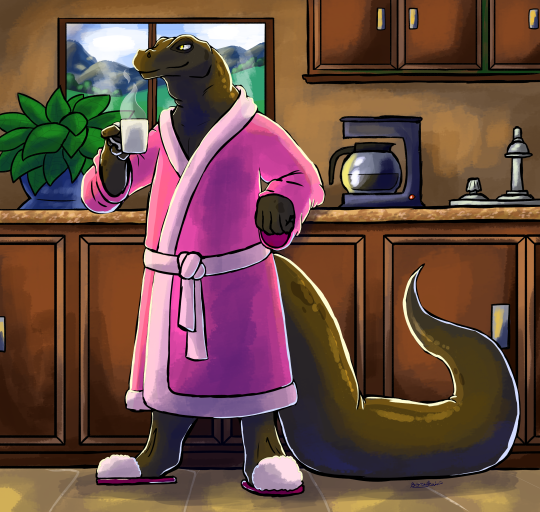
Commission for LuxuryAerozona (twitter) of his sona, Kip, enjoying his morning coffee :)
10 notes
·
View notes
Text
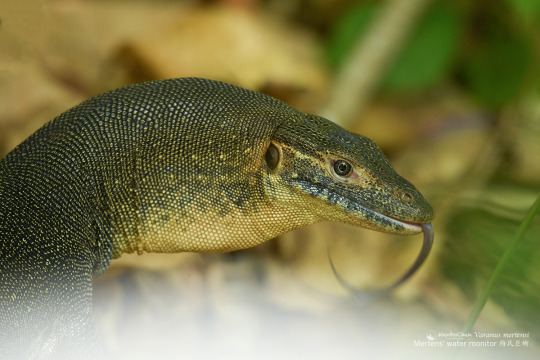

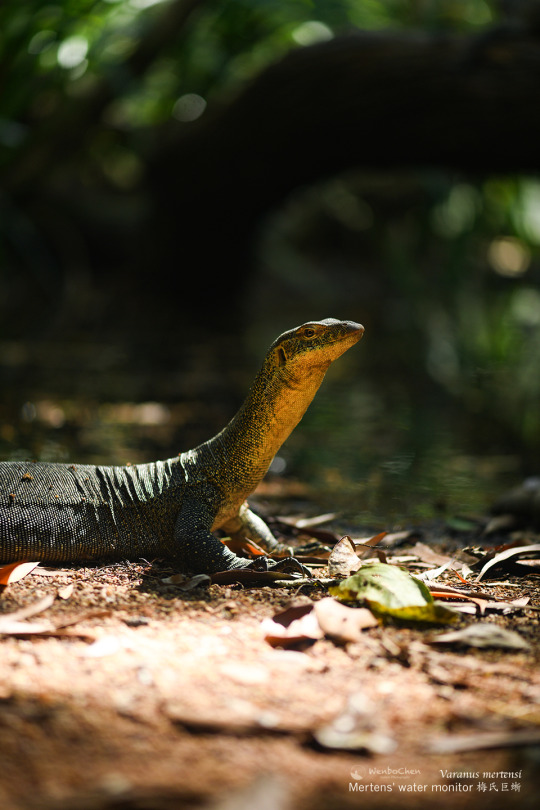


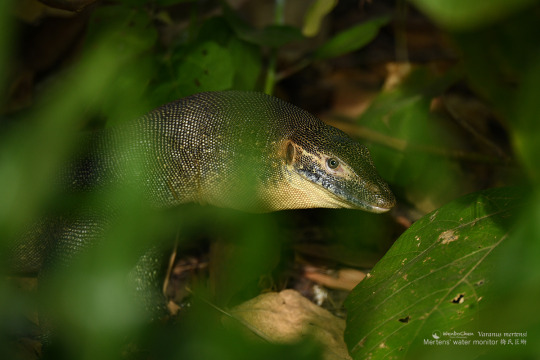
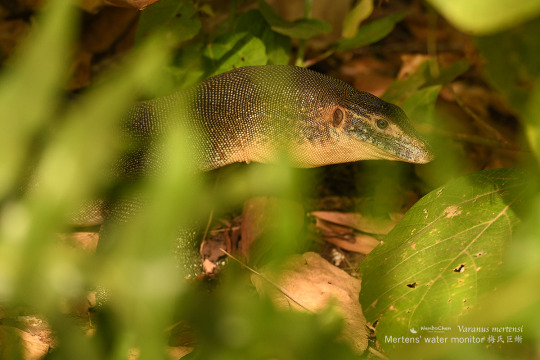
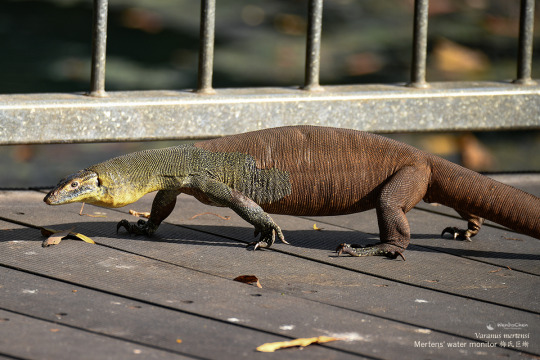
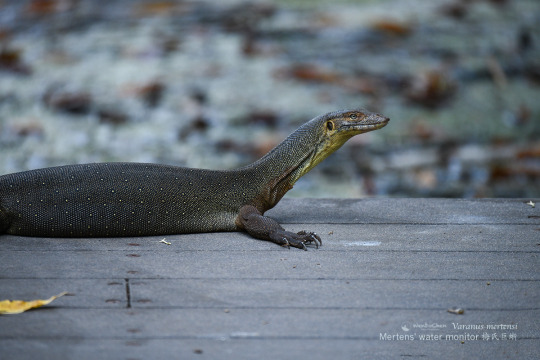

I finally saw some wild Mertens' water monitors (Varanus mertensi) in the Top End. They mainly feed on fish, which makes it easy to find them during the dry season.
52 notes
·
View notes
Text
instagram
"I could brown, I could be blue.." 🎶
Monitor lizards exhibit a diverse range of colors, including brown, black, gray, green, yellow, and blue, as shown here by this blue tree monitor.
📸: Charles Frey
from https://www.instagram.com/sandiegozoo/
5 notes
·
View notes
Photo

Exhausted Monitor Lizard
Uploading some old art from the 2022 Weretober challenge. Day 22: Monitor Lizard
4 notes
·
View notes
Photo
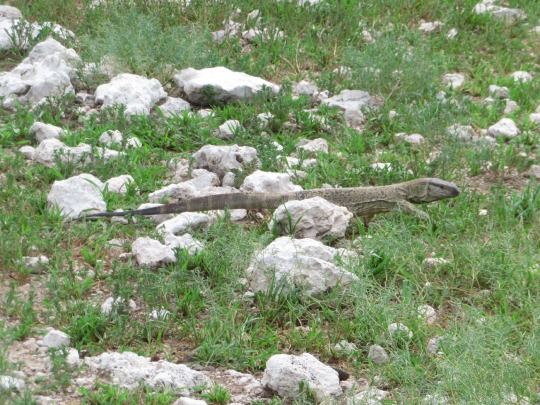
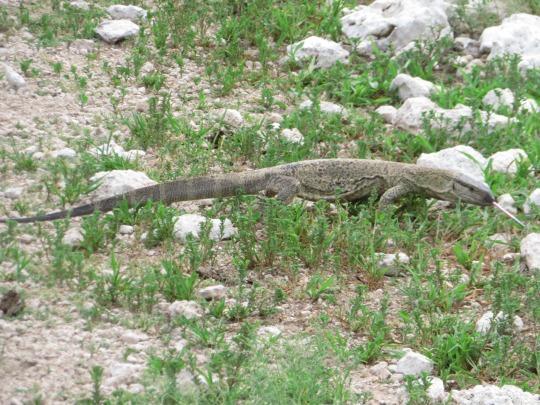

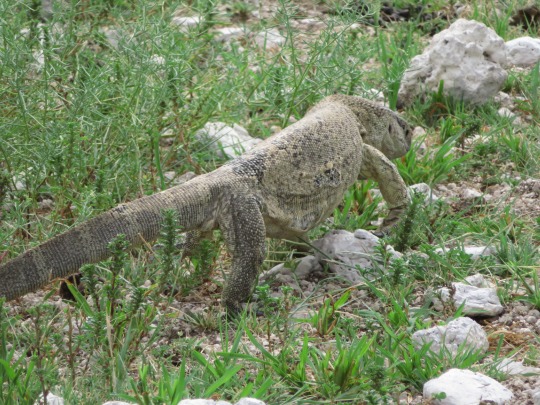
Weißkehl- oder Kapwaran | Rock monitor
Varanus albigularis
[Etosha]
#Weißkehlwaran#Kapwaran#Rockmonitor#Varanusalbigularis#Waran#Monitorlizard#Etosha#Namibia#Afrika#Africa
3 notes
·
View notes
Note
https://youtube.com/shorts/FgQCXPFIg1I?si=7oxWQ1XTpBTl3wM0
i think you'll enjoy this :] it's a reptile video
I LOVE RAPTOR SO MUCH
3 notes
·
View notes
Photo

MY LIZARD THINKS HES A HUMAN! #monitorlizard #reptiles #pets #lizard #komodo
0 notes
Photo
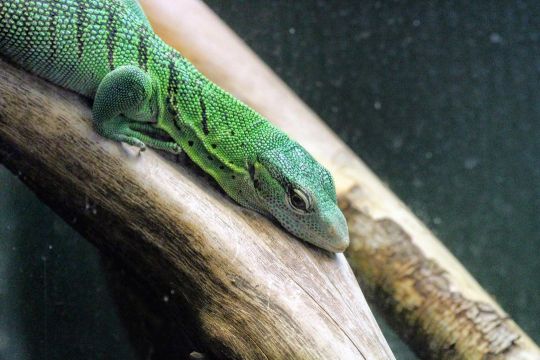
Emerald Tree Monitor (Varanus prasinus) at the Phoenix Zoo #emeraldtreemonitor #greentreemonitor #monitorlizard #monitorlizards #monitorlizardsofinstagram #lizards #lizardsofinstagram #phoenixzoo @phoenixzoo #zoos #zoosmatter #zoophotography #zoophoto https://www.instagram.com/p/Cmz38LWP9q1/?igshid=NGJjMDIxMWI=
#emeraldtreemonitor#greentreemonitor#monitorlizard#monitorlizards#monitorlizardsofinstagram#lizards#lizardsofinstagram#phoenixzoo#zoos#zoosmatter#zoophotography#zoophoto
9 notes
·
View notes
Photo
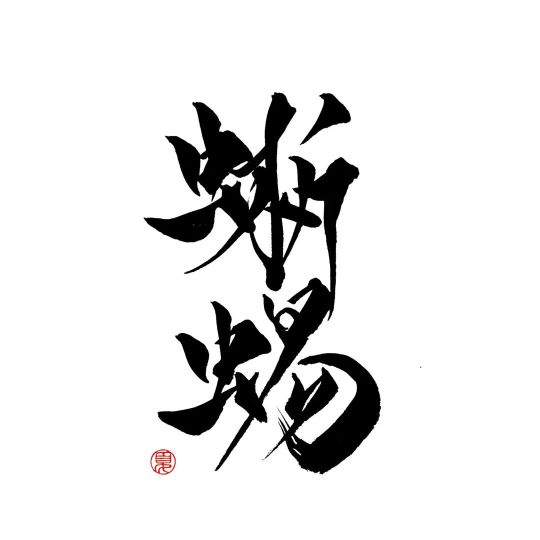
#蜥蜴 #トカゲ #とかげ #lizard #gecko #monitorlizard #komododragon #biawak . Apparently outside of the apartment I'm going to be moving into. 😱 I thought I was gonna be in Singapore, not the jungle 😭 . #Singapore #シンガポール #シンガポールライフ #シンガポール在住 #シンガポール生活 #ペン習字 #筆ペン #漢字 #書道 #書法 #書遊 #毛筆 #墨 #習字 #日本文化 #筆文字 #文字 #和文化 #創作書道 #インスタ書道部 #書道好きな人と繋がりたい https://www.instagram.com/p/Co7itxsP9lu/?igshid=NGJjMDIxMWI=
#蜥蜴#トカゲ#とかげ#lizard#gecko#monitorlizard#komododragon#biawak#singapore#シンガポール#シンガポールライフ#シンガポール在住#シンガポール生活#ペン習字#筆ペン#漢字#書道#書法#書遊#毛筆#墨#習字#日本文化#筆文字#文字#和文化#創作書道#インスタ書道部#書道好きな人と繋がりたい
3 notes
·
View notes
Text


Playing around with brighter colours, getting ready for a rainbow! Yellow first 🌈
Emerald tree monitor (Varanus prasinus) Drawing practice from photo refs!
明るい色実験する。最初は黄色🌈 絵の練習!
久しぶり! 日本語がだんだんできる。二ヶ月前私とフィアンセはいしょうにい日本へいきました。たくさん勉強した! まだ初心者と思いますけど、ソーシャルメディアで、時々英語より日本語ほうがはなすがすき。だんだん自信が持てるようになりました 😁
#art#アート#illustration#photoshop#reptile#爬虫類#lizard#トカゲ#emerald#monitorlizard#reptilesofinstagram#herpetology#science#黄色#green#緑#cartoon#cool
37 notes
·
View notes
Photo

Siap memancing Soasoa alias Nyambik alias Biawak #sail #sailing #monitorlizard #sailmorotai #sailbanda #sailtidore https://www.instagram.com/p/CpyaUREBuP_/?igshid=NGJjMDIxMWI=
2 notes
·
View notes
Text
#varanusacanthurus #redackiemonitor #ackiemonitor #monitorlizard #monitorlizardk...
#varanusacanthurus #redackiemonitor #ackiemonitor #monitorlizard #monitorlizardk…
➡️ 🚀🧨🚀 #varanusacanthurus #redackiemonitor #ackiemonitor #monitorlizard #monitorlizardkeeper #reptilekeeper #varanuskeeper #reptileofig #pet #reptile #reptiles #treemonitor #varanusglauerti #varanusprasinus #petoftheday #petofinstagram #animallover #petofinsta Source

View On WordPress
#ackiemonitor#animallover#dog#monitorlizard#monitorlizardk..#monitorlizardkeeper#Pet#petofinsta#petofinstagram#petoftheday#pug#Puppy#redackiemonitor#reptile#reptilekeeper#reptileofig#reptiles#treemonitor#varanusacanthurus#varanusglauerti#varanuskeeper#varanusprasinus
2 notes
·
View notes
Text
Care Guide: Savannah Monitor

Savannah Monitors (Varanidae – Varanus exanthematicus) or “Bosc Monitors” are what we would consider “expert level” pets, in fact, we would place most monitors in this category. These robust, mini-Velociraptors are more than just a handful to care for. Properly caring for a Savannah Monitor will take space, time, money and energy, a lot of it. They get very large; roughly anywhere between 3 to 5 feet in length (depending on gender and genetics), and will need significant investment into creating their enclosure. Here is everything you’ll need to know and consider before deciding whether to bring this intelligent, chaotic and rewarding creature into your home.
Savannah Monitors are notoriously the most frequently neglected reptile in the pet industry, most do not survive their first year of life in captivity. There is a mountain sized pile of bad care advice available online, and most of the reptile industry has greatly misunderstood these animals for half a century. Luckily, there are also many exceptional keepers out there who go the extra mile, reading into scientific journals, speaking to geography and science experts, and sometimes even getting on a plane to go fetch the data themselves. Those dedicated people have been vital in obtaining a detailed re-understanding of these fantastic, but complicated lizards.
Feeding:
Perhaps the biggest thing the reptile industry got wrong for so long-- treating all monitors alike, though they are the furthest thing from equal. Most large monitors do fantastic, even thrive on a diet of frozen-thawed rodents. For a long time, Savannah Monitors in captivity were being offered a rodent based diet, and no surprise, most of them died. We later learned just how susceptible Sav’s are to Gout and Fatty Liver Disease—FLD for short. When a Sav is fed a rodent exclusive diet, it receives far³ too much fat to reasonably process. When reptiles get fat, they don’t accumulate it under the skin (the way we do), they form fat inside their vital organs, limiting organ function to the ultimate point of failure. This means that an obese Savannah is in real distress and its life is at risk.

All that being said, Savannah Monitors do best on a diet of invertebrates, a lot of them. They will eat an assortment of insects like snails, crickets, superworms, grasshoppers, silkworms, roaches, giant mealworms, etc. Feel free to use packaged or canned feeders too for some variety that you might not be able to access live. ProBugs sells things like packaged scorpions, these can make a nice treat meal for your Sav and are safer to feed in comparison to the live counterpart. A baby Savannah monitor will need to eat daily, high calcium, low fat. An adult can be fed as little as twice a week, provided they are offered enough food per meal, use your judgement and watch how your animal carries their weight. Treat feeders can include hornworms, butterworms, waxworms, quail eggs, shrimp, etc. Feel free to read more into their dietary requirements to balance calcium and phosphorus levels. There are a lot of wonderful resources available including the Facebook group “Savannah Monitor Group” where they have compiled countless files analyzing and encouraging Sav care improvement, check out this dietary note for more clarification.
When feeding your Savannah Monitor, it is also extremely important to supplement their diet with vitamins and minerals. Each feeding, dust your feeder insects with a Calcium powder +D3. Once a week, you can swap out the calcium with a multivitamin powder. Proper supplementation protects your animal from life threatening diseases like MBD (Metabolic bone disease), Vitamin A deficiency (vision and skin issues), Gout and more.

Housing, Substrate, Humidity, Water:
Savannah Monitors are LARGE, and will require an accommodatingly LARGE enclosure. You will either need to commission a company/person to build something, or build it yourself, as these enclosures are not commercially available. The ideal space for a single adult Savannah, is roughly 8’x4’x4’, babies and juveniles can be kept in 40-gallons to 3’x2’x2’ enclosures while you are building their final home.
Furnish the enclosure with a couple of hiding places, ideally one on each end of the enclosure so that the animal has options depending on the temperature it feels most comfortable in. You may decorate with large, stable pieces of driftwood or cork bark, large pieces of slate and fake foliage. Though you can safely use real plants, monitors are not delicate movers and will most likely trample anything you decide to plant. They’ll destroy fake plants as well; it just takes longer. Remember to diligently secure any heavy décor items you choose to include, as a burrowing Savannah Monitor has the potential to knock things over, risking injury.

The substrate you choose, should be able to hold humidity, be easy to dig in, and capable of holding tunnel shape. The most popular mixture used with this species is a sand/soil mixture. However, there are many types available that you can mix and match to achieve a similar result. We use a mixture of cypress mulch, soil, sand, coco fiber, peat moss and sphagnum moss and find it suits the needs of the animal well, while keeping mess to a minimum. In the wild, Savannah Monitors live in African Sub-Saharan grasslands. They often dig burrows to hide out in, these burrows can reach 100% humidity, this helps them to shed their skin effectively. Aim to keep the enclosure around 60 to 80% humidity, fluctuating throughout the day. You should be able to achieve this by misting the cage daily and/or pouring some water into the substrate. Generally, there should be a period mid-day, where the enclosure dries out, this will maintain the animal’s respiratory health. Too much or constant humidity can be just as bad as too little humidity, finding the right balance and fluctuation is important.
**Note: Savannah Monitors shed their skin in patches, and not all at once. They shed pretty much constantly due to the length of the process. Do not peel any skin off the animal, as you can damage its scales by doing so. If you notice “stuck shed” that has been lingering for longer than the shed cycle, give your monitor a shallow, luke warm soak for about 20 minutes and wipe the softened skin away with a soft cloth. If it does not come off this way, add some wet moss or wet paper towels around the inside of the enclosure for added humidity.
Savannah Monitors usually always defecate in their water dish, it will need to be replaced once or twice a day to ensure your animal has access to clean, fresh water at all times. When choosing a water dish, pick one that your animal will be able to completely submerge their body in. For adults, this often means a large storage tub, as commercial ‘reptile branded’ water dishes are not large enough. Use a water de-chlorinator like Reptisafe in your animal’s water to remove any harmful impurities often found in tap water.

Heat and Light:
As is the case with most Monitors, Savannah’s need a lot of heat to properly digest meals and form bones the way they should. They will require a hot spot of around 130/140 degrees F, 120 F for juveniles. The hot spot should ideally have some sort of rock or slate beneath to maintain the temperature and provide access to belly heat. The ambient air temperature should be around 85 degrees F, while the coldest areas may drop as low as 75 degrees F. Having this range of temperatures available will assist your animal with thermoregulation. A hatchling enclosure can be heated with a single heat bulb, whereas an adult should be offered two heat bulbs on the basking site to disperse the concentration of heat. Adults kept with a single heat bulb will not be able to effectively warm themselves under one bulb. They often end up with back burns from sitting in the same spot, trying to warm their large, long body with a single heat beam.

Savannah Monitors will also do best when kept under a high level of UVB, 10.0 Desert or 14%. Many monitor keepers believe it is not necessary to use UVB lighting, due to the way they synthesize D3 and process calcium. We disagree with this and believe that UVB is absolutely vital to our diurnal monitor lizards, due to the way it stimulates appetite, energy and activity, and vibrant scale colour development. T5 bulbs (we like Arcadia) are the most effective UV lighting option available on the market, we strongly advise using them. It is best to choose a bulb that offers full coverage to the length of the enclosure, these bulbs need to be changed every six months to once a year as they run out of the chemical that makes them effective. As a cost saving measure (to avoid replacing bulbs when unnecessary), if you have the money to invest in a Solarmeter, we would highly recommend it. They run about $300 CAD, and have become a staple tool for maintaining our collection.
Taming, Sexing, Extras:
Savannah Monitors are highly intelligent reptiles, this makes them harder to bond with because they instinctively see you as a predator and are more than capable of defending themselves. Their defence mechanisms include a full set of sharp claws, teeth designed to lacerate flesh and a tail they know how to whip with accuracy. To get your animal to trust you will be a lengthy process, that can easily be thrown off track if you make the wrong move, but you can always restart. Trust building should be done gradually. Get your Sav used to your presence, let them know you’re safe by maintaining consistency. Have them slowly get used to you routinely bringing them food, changing their water, cleaning their enclosure, and speaking to them in a low voice.
There are many routes you can take from there, some use food as a motivator for contact. Others like to target train feedings and keep handing contact separate to avoid accidental food response bites. Whichever route you choose, take it slow and be consistent. Your monitor will calm down and begin to regard you as a safe person they can trust over time. Try not to handle your animal while it is cold, they’ll be calm because they’re too cold to move, but they’ll also be terrified. If you focus on keeping them warm while interacting (in-cage interactions, brief out-of-cage interactions), they will feel safer knowing they still have the energy to defend themselves if they need to.

**Note: Try to work with the animal a lot while it is young, and regularly as it grows to maintain your bond. An animal that trusts you can easily turn to one who doesn’t if it isn’t handled for two months. Get your Savannah to a point where it’s unlikely to bite you while it is still too small to do significant damage, an adult monitor bite is no picnic and can be very serious.
Sexing monitors is not easy, often you won’t actually be able to tell for sure until you see an adult hemipenal eversion while it defecates (usually in water). Sometimes you can tell by the appearance of the adult animal by looking at the head shape (males have bigger heads, more bulbous foreheads, and larger nostrils), the sheer body size, or looking for male signifying grease patches on the underside of the back feet. If you have no luck with any of that, blood tests performed by a veterinarian are the most accurate way to know for sure.
You’ll find a lot of people online claiming Savannah Monitors are horrible pets, they’re really not. They can make absolutely wonderful, fulfilling, intelligent pets for the right person. You have to fully commit yourself to providing ample time, energy, investment and patience if you want it to work. Once you have the husbandry down, and the taming under control, you’ll probably end up with a very personable, entertaining, dog sized lizard. It takes a lot of determination but it’s so worth it to end up with the animal you’ll get in the end. We love our boy, and he tolerates us but loves food. If it’s affection you’re after, you might consider getting a dog instead.

#care guide#care guides#careguide#careguides#savannahmonitor#savannahmonitors#savannah monitor#savannah monitors#varanid#varanidae#varanus#varanusexanthematicus#varanus exanthematicus#monitor lizard#monitorlizard#lizard#lizards#african animals#reptiles#reptile care#reptile husbandry#pet industry#redeyereptile#redeyereptiles#red eye reptile#red eye reptiles#care-guides#care_guides
8 notes
·
View notes
Photo

Monitor lizard 🦎 For a mostly experimental model this one came out pretty well. Learned a new approach to creating limbs that end in 2-5 claws. Extra pleats in the center help add bulk to the body and a scaled appearance. #origami #animals #nature #reptiles #lizard #monitorlizard #cool #cute #small #sculpture #photography #handmade #origamifolding #origamiart #paperart #paper #papercraft #paperfolding #papertigerfolds #paperlicious (at Rochester, New York) https://www.instagram.com/p/CScNMlPLlWM/?utm_medium=tumblr
#origami#animals#nature#reptiles#lizard#monitorlizard#cool#cute#small#sculpture#photography#handmade#origamifolding#origamiart#paperart#paper#papercraft#paperfolding#papertigerfolds#paperlicious
10 notes
·
View notes